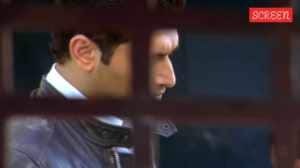The Twist in the Ever After
In a way all fairy tales are retellings.
In a way all fairy tales are retellings. The Brothers Grimm collected their tales from a long tradition of oral storytelling. Charles Perrault adapted his for the drawing rooms of 17th century France. My Mother She Killed Me My Father He Ate Me opens with an Angela Carter quote: Who first invented meatballs? In what country? Is there a definitive recipe for potato soup? Carters own 1979 work,The Bloody Chamber,was a seminal act of fairy-tale retelling. Bernheimers collection of 40 fairy tales by various writers is dedicated to Carter,and her shadow looms over many of the stories.
Many stories in this collection are original works that use fairy-tale tropes. Neil Gaimans Orange takes the good sister/bad sister theme,but adds aliens,artificial tan and police reports.
Writers like Brian Evenson,Susan Shuh-Lien Bynum,Hiromi Ito and Joyce Carol Oates base their pieces on established stories. Evensons Dapplegrim,based on a Norwegian folktale,is dark,obsessive and full of bloodshed. Itos I Am Anjuhimeko is powerful and epic in scope. Oates and Bynum tackle stories previously riffed off by Carter but take them in different directions. Oates version of the Bluebeard myth is clever and surprising,while Bynums The Erlking is one of the highlights of the anthology.
The Grimm brothers The Six Swans forms the starting point for Shelley Jacksons The Swan Brothers hands down,the best thing in the book,partly story,partly a loosely connected set of observations about the fairy tale. Here,for example,are Things You Learn From Reading:
Women are trouble if it isnt an evil wife,its an evil stepmother. Or mother-in-law. Mothers are usually all right,unless theyre witches watch out for witches.
You might be all right with kings,princes,and fathers,unless,as is usually the case,theyre under the influence of someone else,usually a woman. Men are weak. Sometimes they rescue you,but they always have help from ants or birds or women. Sometimes you rescue them. This is kind of sweet.
You can trust animals. Sometimes they turn into people,but dont hold that against them. Children better watch out.
To retell a story inevitably leads to thinking about how narratives work,and many of the pieces in this collection are,like Jacksons,stories about stories. Kim Addonizios Ever After has seven dwarves reading Snow White as a religious text. Karen Brennans The Snow Queen and Francine Proses Hansel and Gretel both have their narrators thinking through their relationships with fairy tales. The fascinating notes from the authors at the end of each story provide more insight.
There are some real treasures in this collection,with all the menace and magic of the traditional fairy tale.







- 01
- 02
- 03
- 04
- 05
























